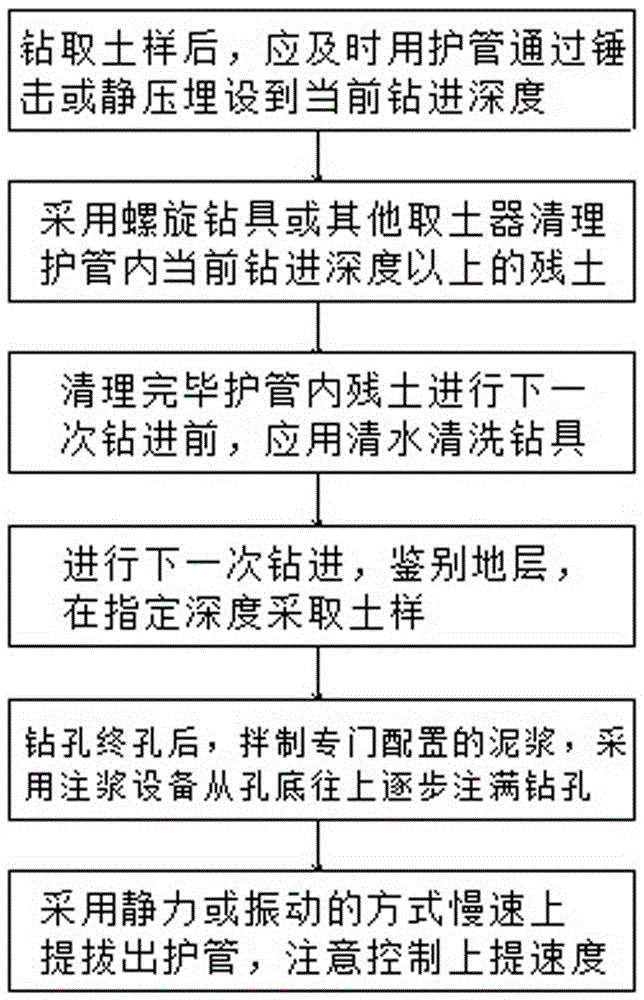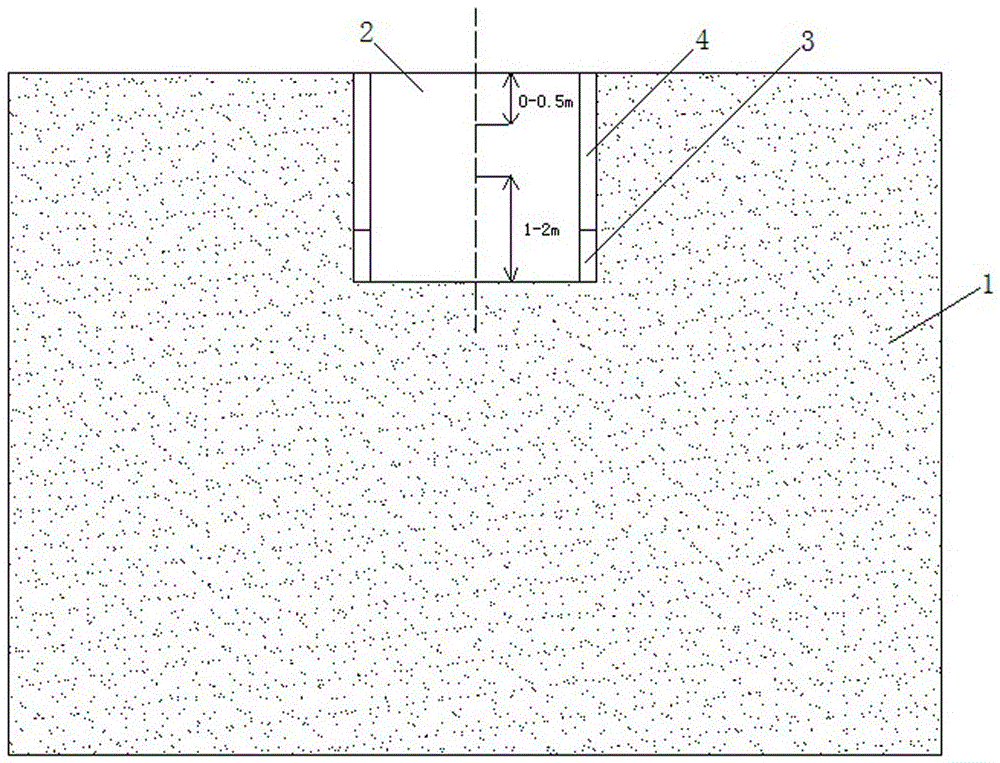A drilling method preventing secondary pollution for reconnaissance of a polluted site
A secondary pollution and site technology, applied in the direction of sampling, measuring devices, instruments, etc., can solve the problems of misjudgment of pollution range, secondary pollution, pollutants brought into the deep, etc., and achieve simple device, easy operation, and suitable for promotion Effect
- Summary
- Abstract
- Description
- Claims
- Application Information
AI Technical Summary
Problems solved by technology
Method used
Image
Examples
Embodiment
[0027] Embodiment: In this embodiment, the drilling method for preventing secondary pollution in polluted site investigation will be described in conjunction with a simulation example. The simulation example is as follows: According to data analysis, there may be organic pollution in a certain contaminated site 1, and it is necessary to collect soil samples in the three specified depth ranges of 0-0.5m, 1-2m and 3-4m in the contaminated site 1 as soil samples. The monitoring factors for soil samples are: pH, TPH, VOC and SVOC. Since disturbances should be avoided during VOC sampling, undisturbed soil fetchers and drilling rigs should be used for on-site sampling.
[0028] The drilling method is as follows figure 1 The implementation of the steps shown, steps 1-4 in the figure, is a process of repeated cycle implementation (unless the drilling has reached the final depth—that is, the depth of the final hole), and each step has the following instructions:
[0029] 1) Collect t...
PUM
 Login to View More
Login to View More Abstract
Description
Claims
Application Information
 Login to View More
Login to View More - R&D
- Intellectual Property
- Life Sciences
- Materials
- Tech Scout
- Unparalleled Data Quality
- Higher Quality Content
- 60% Fewer Hallucinations
Browse by: Latest US Patents, China's latest patents, Technical Efficacy Thesaurus, Application Domain, Technology Topic, Popular Technical Reports.
© 2025 PatSnap. All rights reserved.Legal|Privacy policy|Modern Slavery Act Transparency Statement|Sitemap|About US| Contact US: help@patsnap.com



